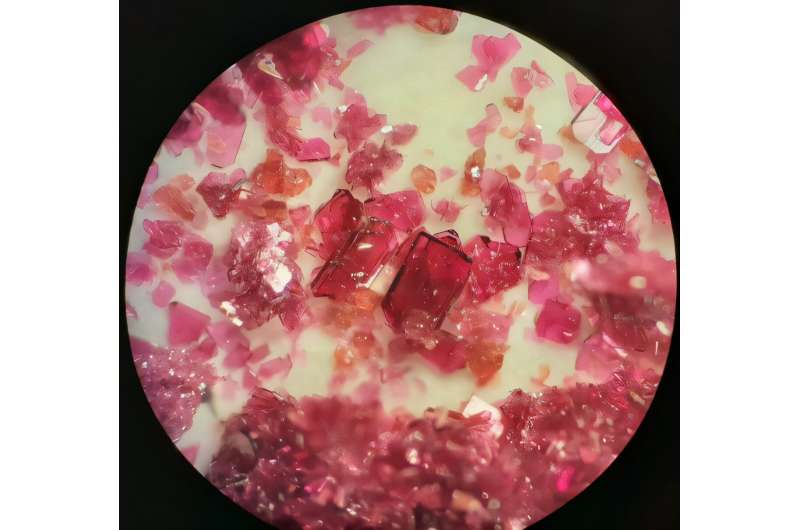
November 4, 2024 by University of Groningen
Collected at: https://techxplore.com/news/2024-11-magnetocaloric-cooling-method-liquid-hydrogen.html
If we want to use hydrogen as fuel for cars or airplanes, or for chemical storage of excess renewable energy, it would be most efficient if it were liquid. However, this would require cooling it down to minus 253°C or 20°K, which is very energy-consuming when using a conventional cooling technology.
A team of scientists led by Graeme Blake, assistant professor of Inorganic Chemistry at the University of Groningen (the Netherlands), has been researching a more energy-efficient cooling method called magnetocaloric cooling. The research is published in the journal Nature Communications.
This method involves using materials that will heat up when they are exposed to a magnetic field. The heat is then transferred to a “heat sink,” which leaves the material—and its surroundings—colder once the magnetic field is removed. The method not only consumes less energy, but also eliminates the need for refrigerant gases, which have a strong greenhouse effect.
 This image shows the crystal structure of the new magnetocaloric material: cobalt hydroxide layers are shaded pink, sulfate ions are shaded yellow, oxygen atoms are red, carbon atoms are brown, nitrogen atoms are light blue, hydrogen atoms are white. Credit: University of Groningen / Blake lab
This image shows the crystal structure of the new magnetocaloric material: cobalt hydroxide layers are shaded pink, sulfate ions are shaded yellow, oxygen atoms are red, carbon atoms are brown, nitrogen atoms are light blue, hydrogen atoms are white. Credit: University of Groningen / Blake lab Upper left: the magnetocaloric material starts in the magnetically disordered (paramagnetic) state at temperature T. Upper right: an external magnetic field is applied and causes the material to enter the magnetically ordered (ferromagnetic) state, with a consequent rise in temperature to T+ΔT. Lower right: heat is transferred away from the material to reduce its temperature back to T. Lower left: the magnetic field is removed and causes the material to lose its magnetic order, returning to the paramagnetic state and decreasing the temperature to T-ΔT. Heat can now be removed from the substance to be cooled (hydrogen), raising the temperature of the magnetocaloric material back to T (upper left. Credit: University of Groningen / Blake lab
Upper left: the magnetocaloric material starts in the magnetically disordered (paramagnetic) state at temperature T. Upper right: an external magnetic field is applied and causes the material to enter the magnetically ordered (ferromagnetic) state, with a consequent rise in temperature to T+ΔT. Lower right: heat is transferred away from the material to reduce its temperature back to T. Lower left: the magnetic field is removed and causes the material to lose its magnetic order, returning to the paramagnetic state and decreasing the temperature to T-ΔT. Heat can now be removed from the substance to be cooled (hydrogen), raising the temperature of the magnetocaloric material back to T (upper left. Credit: University of Groningen / Blake lab
Blake used magnetocaloric cooling to reach 20°K, cold enough to liquify hydrogen. This has been done before, but only with materials containing rare-earth metals. The mining of these metals consumes a lot of energy and can lead to environmental problems.
What’s revolutionary about Blake’s material is that it does not contain these metals. “Our material, or a future variant of it, could probably reduce the cost and improve the environmental friendliness of this cooling technology,” say the authors.
More information: J. J. B. Levinsky et al, Giant magnetocaloric effect in a rare-earth-free layered coordination polymer at liquid hydrogen temperatures, Nature Communications (2024). DOI: 10.1038/s41467-024-52837-x
Journal information: Nature Communications

Leave a Reply